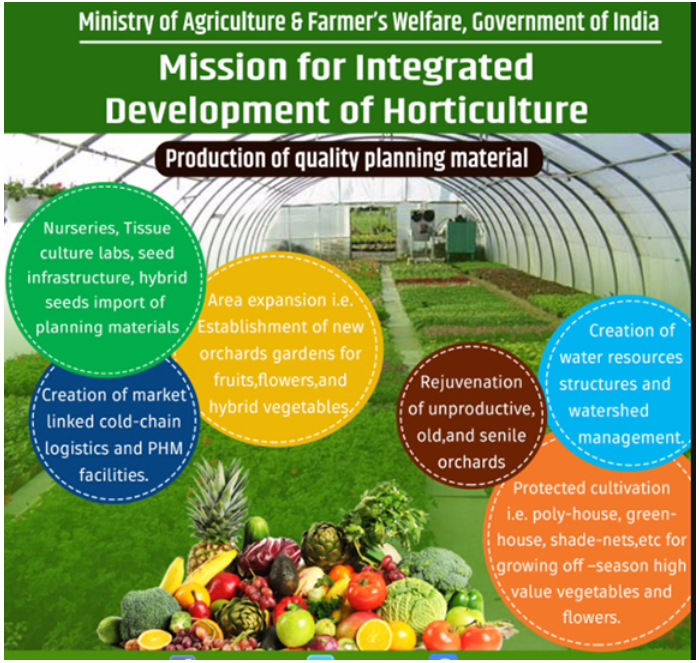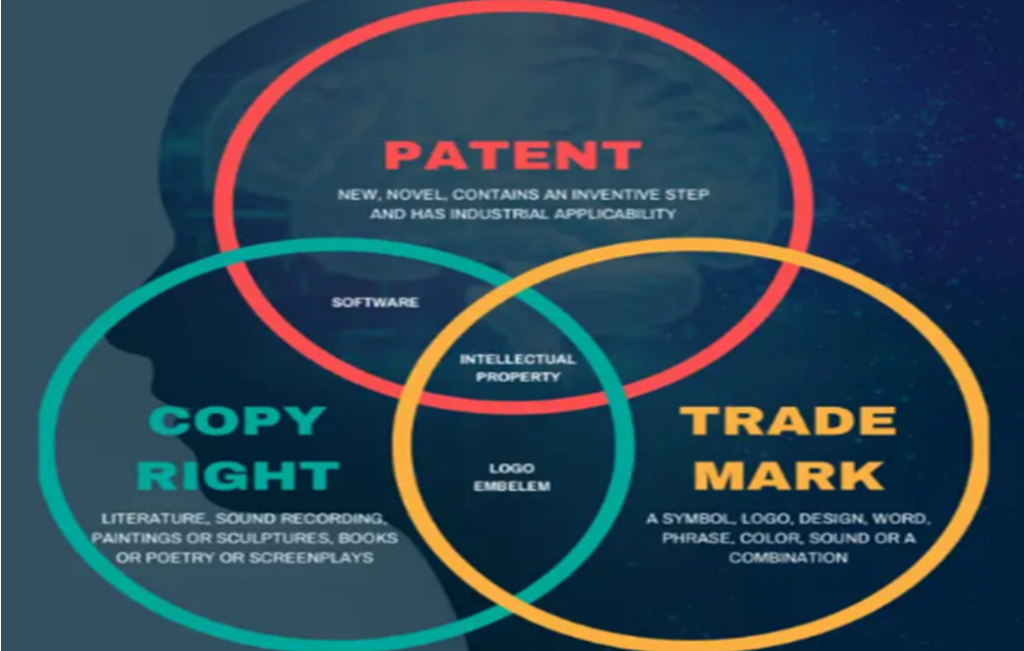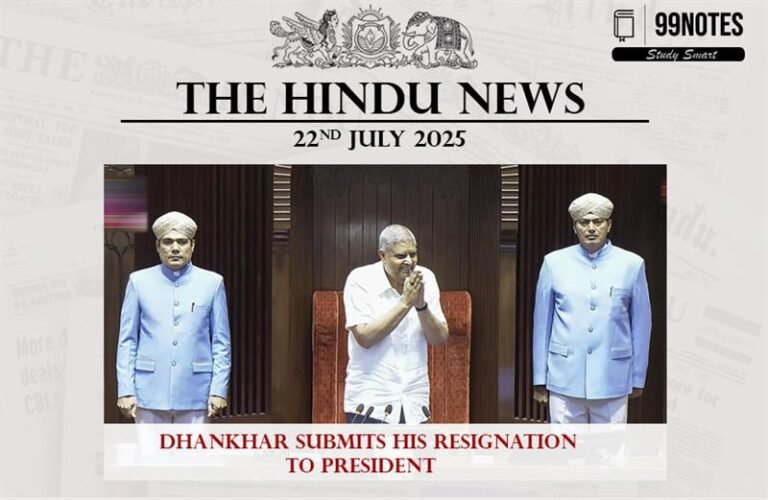10 August 2024 : Daily Current Affairs
1. New Bill to give statutory powers to Railway Board
- 1. New Bill to give statutory powers to Railway Board
- 2. Opposition parties prepare to move no-confidence motion against V-P
- 3. India to roll out new treatment regimen for drug-resistant TB
- 4. US Court Declares Google a Monopolist: Implications for India’s Antitrust Battle and the Future of Digital Competition
- 5. Union Cabinet Rejects Supreme Court’s Creamy Layer Exclusion for SC/ST Reservations, Cites Constitutional Provisions
- 6. Union Cabinet Approves 3 Crore Additional Houses Under PMAY for Rural and Urban Areas
- Prelims Facts
- 1. Aman keeps India’s flag flying high
- 2. Cabinet approves Amendment in “Pradhan Mantri JI-VAN Yojana”
- 3. Cabinet Approves ₹1,766 Crore Clean Plant Programme to Boost Horticulture Quality and Productivity
- 4. Calcutta HC Rules Hiring of Contractual Employees for Quasi-Judicial Roles in Patent and Trademark Office Illegal
(Source – The Hindu, International Edition – Page No. – 3)
| Topic: GS2 – Indian Polity |
| Context |
|
Analysis of the news:
- Introduction of the Bill: Union Railway Minister Ashwini Vaishnaw introduced the Railways (Amendment) Bill, 2024 in the Lok Sabha on Friday.
- Objective: The Bill aims to grant statutory powers to the Railway Board and enhance its functioning and independence.
- Present Status: The Railways Act of 1989 replaced the Indian Railways Act of 1890, but the Railway Board has continued to operate without statutory backing.
- Proposed Changes: The Bill seeks to incorporate provisions of the Indian Railway Board Act, 1905 into the Railways Act, 1989, simplifying the legal framework and reducing the need to reference two separate laws.
| Railway Board: |
|
| Practice Question: Discuss the significance of the Railways (Amendment) Bill, 2024, introduced in the Lok Sabha. How does the Bill aim to enhance the functioning and independence of the Railway Board? (150 Words /10 marks) |
2. Opposition parties prepare to move no-confidence motion against V-P
(Source – The Hindu, International Edition – Page No. – 4)
| Topic: GS2 – Indian Polity |
| Context |
|
No-Confidence Motion Against Vice President:
Article 67(B) of the Indian Constitution:
- This article provides the constitutional basis for the removal of the Vice-President of India.
- It stipulates that the Vice-President can be removed from office by a resolution of the Rajya Sabha (Council of States) passed by a majority of all the then members of the Rajya Sabha.
- The resolution must also be agreed to by the Lok Sabha (House of the People) with a simple majority.
- The resolution to remove the Vice-President must be preceded by at least fourteen days’ notice.
Advantages:
- Rigorous Process: The requirement of a majority of all members in Rajya Sabha and a simple majority in Lok Sabha ensures broad parliamentary consensus, preventing arbitrary removal.
- Preventing Abuse: The necessity of a fourteen-day notice period allows for thorough deliberation and prevents hasty decisions.
- Checks and Balances: The dual approval requirement from both Houses maintains a balance of power and ensures that the decision is representative of the entire Parliament.
Historical Context:
- Article 67(B) outlines the rare and significant process for removing a Vice-President, emphasising the gravity and procedural rigour involved.
- No Vice-President has been removed from office in Indian parliamentary history, making the process both unprecedented and challenging.
| Practice Question: Analyse the constitutional provisions under Article 67(B) of the Indian Constitution regarding the removal of the Vice-President of India. Discuss the procedure for initiating a no-confidence motion against the Vice-President. (150 Words /10 marks) |
3. India to roll out new treatment regimen for drug-resistant TB
(Source – The Hindu, International Edition – Page No. – 5)
| Topic: GS2 – Social Justice – Health |
| Context |
|
Analysis of the news:
- BPaL Regimen Rollout: India will soon introduce the BPaL regimen (bedaquiline, pretomanid, and linezolid) for all multidrug-resistant (MDR-TB) and extensively drug-resistant tuberculosis (XDR-TB) patients.

- Training and Implementation: Training for the new regimen starts this month.
- Positive Results: The regimen has shown promising results in countries like Pakistan, South Africa, and Ukraine.
- NAAT Testing: Nucleic acid amplification tests (NAAT) will be crucial in the strategy, detecting Mycobacterium tuberculosis DNA.
- Cost Reduction: With generic bedaquiline, the cost of BPaL is reduced, making it more affordable.
- Treatment Duration: BPaL reduces TB treatment time from 18-24 months to around six months, simplifying daily medication from 14 drugs to three tablets.
- WHO Recommendation: The World Health Organization endorsed BPaL and BPaLM as effective treatments for drug-resistant TB in 2022.
| What is drug-resistant TB? |
|
| Practice Question: Discuss the current burden of tuberculosis (TB) in India, highlighting the challenges posed by multidrug-resistant (MDR-TB). Evaluate the significance of introducing the BPaL regimen in addressing these challenges and improving treatment outcomes. (250 Words /15 marks) |
4. US Court Declares Google a Monopolist: Implications for India’s Antitrust Battle and the Future of Digital Competition
(Source: Indian Express; Section: Explained; Page: 19)
| Topic: GS2 – Governance |
| Context: |
| The article discusses a landmark US court ruling against Google’s monopolistic practices and its potential implications for ongoing antitrust cases and regulatory measures in India. |
Analysis of News:
Google’s Antitrust Violation and Global Implications
- In a landmark ruling by Judge Amit Mehta of the US District Court of Columbia, Google was deemed a monopolist, found guilty of violating antitrust laws to maintain its dominance in the general search services and general search text ads markets.
- The court highlighted that Google solidified its monopoly by paying billions to companies like Apple and Samsung to ensure its search engine remained the default on their devices.
Impact on Indian Market and Legal Battles
- The ruling may have repercussions in India, where Google has also been accused of anti-competitive practices.
- However, the market conditions in India differ significantly. For instance, Xiaomi, which leads the mobile phone market, comes with the Opera browser pre-installed, not Google.
- Moreover, the Competition Commission of India (CCI) had already fined Google over ₹1,337 crores for forcing the pre-installation of Google apps on Android devices, compelling Google to allow Indian users to choose their default search engine.
Challenges for New Competitors
- Judge Mehta underscored the substantial barriers for any new entrant trying to compete with Google.
- These include the immense capital required, access to distribution channels, and building an ads platform comparable to Google’s.
- The ruling illustrated the difficulty for companies like Mozilla to move away from Google, given the entrenched market position Google holds.
What is Digital Competition Bill, 2024?
- The bill seeks to further regulate large digital enterprises, including news aggregators, as part of efforts to ensure a level-playing field and fair competition in the digital space.
- The new law could prevent big tech companies like Google, Facebook, and Amazon from favoring their own services or using data collected from one of their businesses to help another one of their businesses.
- It has provisions to set presumptive norms to curb anti-competitive practices before they actually take place.
- It promises to impose heavy penalties which could amount to billions of dollars for violations.
- Similarity with EU’s Digital Markets Act (DMA)
- The new law is similar to the EU’s Digital Markets Act (DMA), which went into complete effect earlier this year.
- DMA requires large tech firms like Alphabet, Amazon and Apple to open their services, and not favour their own at the expense of rivals.
- Nodal ministry
- The Ministry of Corporate Affairs (MCA) is handling the draft.
India’s Draft Competition Bill and Big Tech’s Response
- India’s Draft Competition Bill, 2024, aims to regulate Systemically Significant Digital Enterprises (SSDEs) like Google, restricting anti-competitive practices.
- It includes provisions to prevent these companies from favoring their own products or misusing user data.
- However, big tech companies have raised concerns about the Bill, arguing that it could stifle innovation and impose excessive compliance burdens, potentially affecting domestic tech companies like Zomato and Swiggy.
| Criticism of the digital competition Bill 2024 |
|
Significant compliance burden
Stringent requirements of the EU’s DMA and associated impact
Broad definition of who a significant platform could be
May affect smaller businesses
|
| Practice Question: Evaluate the implications of the US District Court’s ruling against Google’s monopolistic practices on global antitrust regulations and its potential impact on ongoing legal disputes and regulatory frameworks in India. (150 words/10 m) |
5. Union Cabinet Rejects Supreme Court’s Creamy Layer Exclusion for SC/ST Reservations, Cites Constitutional Provisions
(Source: Indian Express; Section: Cover Page; Page: 01)
| Topic: GS2 – Governance |
| Context: |
| The Union Cabinet rejected a Supreme Court suggestion to exclude the “creamy layer” from Scheduled Caste (SC) and Scheduled Tribe (ST) reservations. |
Analysis of News:
What was the SC’s Verdict on Sub-Classifications of SCs and STs?
- Sub-Classifications Permitted: The Court ruled that states are constitutionally allowed to sub-classify SCs and STs based on varying levels of backwardness.
- The seven-judge Bench ruled that states can now sub-classify SCs within the 15% reservation quota to provide better support for the most disadvantaged groups.
- Chief Justice of India emphasised the difference between “sub-classification” and “sub-categorisation,” cautioning against using these classifications for political appeasement rather than genuine upliftment. The Court noted that sub-classification should be based on empirical data and historical evidence of systemic discrimination, rather than arbitrary or political reasons.
- States must base their sub-classification on empirical evidence to ensure fairness and effectiveness.
- The Court clarified that 100% reservation for any sub-class is not permissible. State decisions on sub-classification are subject to judicial review to prevent political misuse.
- The Supreme Court has ruled that the ‘creamy layer’ principle, previously applied only to Other Backward Classes (OBCs) (as highlighted in Indra Sawhney Case), should now also be applied to SCs and STs.
- This means states must identify and exclude the creamy layer within SCs and STs from reservation benefits. The judgement responds to the need for a more nuanced approach to reservations, ensuring that benefits reach those who are truly disadvantaged.
- The court stated that Reservation has to be limited only to the first generation.
- If any generation in the family has taken advantage of the reservation and achieved a higher status, the benefit of reservation would not be logically available to the second generation.
- Rationale for the Verdict: The Court acknowledged that systemic discrimination prevents some members of SCs and STs from advancing, and therefore, sub-classification under Article 14 of the Constitution can help address these disparities.
- This approach allows states to tailor reservation policies to more effectively support the most disadvantaged within these groups.
Union Government’s Response:
- The Union Cabinet, led by the BJP, rejected this suggestion, citing that the Indian Constitution, as framed by B.R. Ambedkar, does not include a provision for a creamy layer in SC/ST reservations.
Political Response:
- BJP’s SC/ST MPs met with Prime Minister Narendra Modi, who assured them that the government would not act on the Supreme Court’s observations.
- PM Modi reiterated the government’s commitment to the welfare and empowerment of SC/ST communities.
Implication:
- The Cabinet’s decision reflects the BJP-led government’s stance to maintain the existing reservation framework without excluding the creamy layer from SC/ST quotas, emphasizing adherence to constitutional provisions.
For Further Reference:
| What are the Arguments For and Against Sub-Classification? |
|
Arguments For Sub-Classification:
Arguments Against Sub-Classification:
|
| Practice Question: Discuss the implications of the Supreme Court’s suggestion to exclude the “creamy layer” from SC/ST reservations in the context of social justice and constitutional provisions. How does the Union Government’s rejection of this suggestion align with the principles laid out by B.R. Ambedkar in the Constitution? (250 words/15 m) |
6. Union Cabinet Approves 3 Crore Additional Houses Under PMAY for Rural and Urban Areas
(Source: Indian Express; Section: Govt & Politics; Page: 08)
| Context |
| The Union Cabinet approved the construction of 3 crore additional houses under the Pradhan Mantri Awaas Yojana (PMAY), with 2 crore houses for rural areas (PMAY-Gramin) and 1 crore for urban areas (PMAY-Urban). |
Analysis of News:
What is Pradhan Mantri Awas Yojana?
- Pradhan Mantri Awaas Yojana- Gramin (PMAY-G):
- Launch: To achieve the objective of “Housing for All” by 2022, the erstwhile rural housing scheme Indira Awaas Yojana (IAY) was restructured to Pradhan Mantri Awaas Yojana-Gramin (PMAY-G) from 1st April 2016, as a centrally sponsored scheme.
- Ministry Involved: Ministry of Rural Development.
- Status: States/UTs have sanctioned 2.85 crore houses to the beneficiaries and 2.22 crore houses have been completed till March 2023.
- Aim: To provide a pucca house with basic amenities to all rural families, who are homeless or living in kutcha or dilapidated houses by the end of March 2022.
- To help rural people Below the Poverty Line (BPL) in the construction of dwelling units and upgradation of existing unserviceable kutcha houses by assisting in the form of a full grant.
- Beneficiaries: People belonging to SCs/STs, freed bonded labourers and non-SC/ST categories, widows or next-of-kin of defence personnel killed in action, ex-servicemen and retired members of the paramilitary forces, disabled persons and minorities.
- Selection of Beneficiaries: Through a three-stage validation such as Socio-Economic Caste Census 2011, Gram Sabha, and geo-tagging.
- Cost Sharing: The Centre and states share expenses in 60:40 ratio in case of plain areas, and in 90:10 ratio for northeastern states, two Himalayan states and the UT of Jammu and Kashmir.
- The Centre bears 100% cost in case of other Union Territories, including the UT of Ladakh.
- Pradhan Mantri Awas Yojana – Urban (PMAY-U):
Key Decisions:
-
-
-
- PMAY-Gramin: Financial assistance for constructing 2 crore houses from FY 2024-2029, with existing unit assistance of ₹1.20 lakh in plain areas and ₹1.30 lakh in the northeastern and hill states.
-
-
-
-
-
- PMAY-Urban: Aims to construct 1 crore homes through various schemes, including beneficiary-led construction, affordable housing partnerships, rental housing, and interest subsidies.
-
-
Financial Commitment:
-
-
-
- Total outlay of ₹3.06 lakh crore over five years, with ₹2.05 lakh crore as the central share and ₹1.00 lakh crore as the state share.
-
-
Implications:
-
-
-
- The decision aligns with the government’s commitment to inclusive growth, aiming to address the housing needs of nearly 10 crore individuals across rural and urban India.
-
-
| PYQ: With a brief background of quality of urban life in India, introduce the objectives and strategy of the ‘Smart City Programme’ (200 words/12.5m) (UPSC CSE (M) GS-1 2016) |
| Practice Question: Evaluate the significance of the financial assistance and allocations under the Pradhan Mantri Awas Yojana (PMAY) for both rural and urban housing sectors. Discuss the potential impacts of these measures on the socio-economic development of rural and urban areas. (250 words/15 m) |
Prelims Facts
1. Aman keeps India’s flag flying high
(Source – The Hindu, International Edition – Page No. – 14)
| Context |
|

Analysis of the news:
-
-
-
- Aman Sehrawat, a 21-year-old wrestler from Chhatrasal Akhara in New Delhi, demonstrated remarkable resilience and dedication by clinching a bronze medal at the Olympics.
-
-
-
-
-
- After a quick semifinal loss to former Olympic silver medallist Rei Higuchi, Sehrawat swiftly managed his weight and prepared rigorously for his bronze medal match.
-
-
-
-
-
- Despite facing a tough opponent in Darian Toi Cruz, Sehrawat’s relentless performance and strategic approach led him to a convincing 13-5 victory.
-
-
-
-
-
- Having faced personal tragedies and a demanding training environment, Sehrawat’s success highlights his determination and unwavering commitment to achieving his Olympic dreams.
-
-
2. Cabinet approves Amendment in “Pradhan Mantri JI-VAN Yojana”
(Source – https://pib.gov.in/PressReleseDetail.aspx?PRID=2043925 )
| Topic: GS2 – Governance – Government Policies |
| Context |
|
Pradhan Mantri JI-VAN Yojana:

-
-
-
- Scheme: The Pradhan Mantri JI-VAN (Jaiv Indhan- Vatavaran Anukool fasal awashesh Nivaran) Yojana was launched in March 2019.
-
-
-
-
-
- Financial Support: The scheme will use Viability Gap Funding (VGF) to support Second Generation (2G) Integrated Bioethanol Projects.
-
-
-
-
-
- Financial Outlay: The total financial outlay for the scheme is Rs. 1969.50 crore, covering the period from 2018-19 to 2023-24.
-
-
-
-
-
- Feedstock: The scheme focuses on using lignocellulosic biomass, which includes plant materials like cereal straw, bagasse, and forest residues.
-
-
-
-
-
- Objectives:
- Establish an ecosystem for commercial 2G Ethanol projects.
- Boost Research and Development in the 2G Ethanol sector.
-
- Support 12 commercial and 10 demonstration projects (6 commercial and 5 demonstration in Phase-I, and the remaining in Phase-II).
- Objectives:
-
-
-
-
-
- Implementation Agency: The Centre for High Technology (CHT), under the Ministry of Petroleum and Natural Gas (MoP&NG), will oversee the scheme.
-
-
-
-
-
- Benefits:
- Promotes the use of non-food feedstocks, reducing reliance on food crops.
- Contributes to reducing greenhouse gas emissions.
- Helps prevent biomass burning, improving public health and farmer income.
- Creates jobs in the 2G Ethanol sector and biomass supply chain.
- Supports waste management and contributes to the Swachh Bharat Mission.
-
- Advances 2G Ethanol technology through research and development.
- Benefits:
-
-
-
-
-
- Background: The Ethanol Blended Petrol (EBP) programme, started in 2003, aims to blend ethanol with petrol to address environmental and economic issues. With current blending at around 4.22%, the 2G Ethanol initiative seeks to meet the target of 10% blending by utilising biomass and waste.
-
-
3. Cabinet Approves ₹1,766 Crore Clean Plant Programme to Boost Horticulture Quality and Productivity
(Source: Indian Express; Section: Govt & Politics; Page: 08)
| Context: |
| The Union Cabinet approved the Clean Plant Programme (CPP) with a budget of ₹1,766 crore under the Mission for Integrated Development of Horticulture (MIDH). |
Analysis of News:

Mission for Integrated Development of Horticulture (MIDH):
-
-
-
- Nodal Ministry: The Ministry of Agriculture and Farmers Welfare is implementing MIDH with effect from 2014-15.
-
-
-
-
-
- MIDH is implemented under Green Revolution – Krishonnati Yojana.
-
-
-
-
-
- Funding Pattern: Under MIDH, Government of India (GoI) contributes 60% of total outlay for developmental programmes in all the states except states in North East and Himalayas, 40% share is contributed by State Governments.
-
-
-
-
-
- In the case of North Eastern States and Himalayan States, GoI contributes 90%.
-
-
Key Initiatives:
-
-
-
- Infrastructure: Nine Clean Plant Centres and 75 nurseries will be developed to provide high-quality, virus-free planting materials.
-
-
-
-
-
- Components: The CPP consists of Clean Plant Centres (CPCs), a certification and legal framework, and enhanced infrastructure.
-
-
Objectives:
-
-
-
- To improve the quality and productivity of fruit crops by providing access to superior planting materials.
-
-
-
-
-
- The initiative aims to boost crop yields, enhance the quality of produce, and increase income opportunities for farmers.
-
-
Implications:
-
-
-
- The CPP is expected to revolutionize India’s horticulture sector by setting new standards for quality, sustainability, and excellence.
-
-
4. Calcutta HC Rules Hiring of Contractual Employees for Quasi-Judicial Roles in Patent and Trademark Office Illegal
(Source: Indian Express; Section: Govt & Politics; Page: 10)
| Context: |
| The Calcutta High Court ruled that hiring contractual employees for quasi-judicial functions in the patents and trademarks office is illegal, casting doubt on the validity of many registered trademarks. |
Analysis of News:

Patent vs Copyright vs Trademark
What is a Trademark?
-
-
-
- A trademark is a symbol, design, word or phrase that is identified with a business and when a trademark is registered, its owner can claim “exclusive rights” on its use.
-
-
-
-
-
- The Trademark Act 1999 guarantees protection for a trademark that is registered with the Controller General of Patents, Designs, and Trademarks, also known as the trademark registry.
-
-
-
-
-
- A trademark is valid for 10 years, and can be renewed by the owner indefinitely every 10 years.
-
-
Key Points:
-
-
-
- The court stated that only officers from the official cadre, not contractual hires, should perform quasi-judicial roles under the Trade Marks Act.
-
-
-
-
-
- The ruling followed the hiring of contractual employees by the Quality Council of India (QCI) for the Office of the Controller General of Patents, Designs, and Trademarks.
-
-
Implications:
-
-
-
- This decision affects orders passed by ad hoc officers, potentially leading to increased litigation and challenges to the validity of trademarks registered by these officers.
-
-
-
-
-
- The ruling emphasizes the need for qualified, permanent officers to reduce litigation and ensure the legitimacy of trademarks.
-
-
Legal and Industry Impact:
-
-
-
- The judgment highlights concerns about the outsourcing of critical functions in intellectual property management, with courts increasingly scrutinizing the quality and validity of decisions made by temporary officers.
-
-


